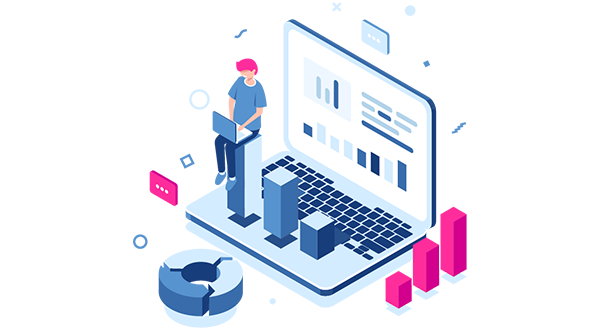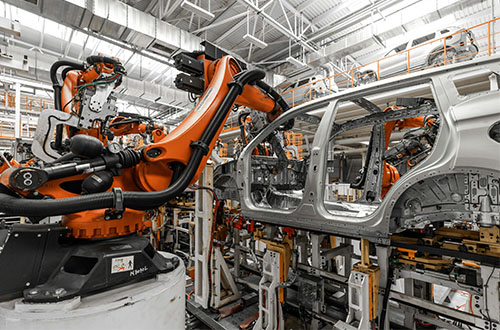

Government Organization – Modernization of the Strategic Database and Applications

Industry: Government
Headquarters: Europe
Coverage: National
Our Customer
The Customer is a government entity that manages tax, income and pension information. This organization manages a massive social service system that interacts with other government systems, including federal and regional organizations, communal institutions, social security, banks and hospitals.
The Challenge
The Customer had initiated a digital transformation process that involved modernization of their Bull Mainframe batch processing systems running the GCOS-8 operating system, and application code consisting of COBOL, Assembler and JCL. Driven by new regulatory requirements, the project was to migrate all mission-critical COBOL applications to a more reliable, robust open platform that could support development of new applications to increase availability via modern web services.
The additional challenge the Customer faced was the rapidly-escalating costs of maintaining and supporting their mainframes, given that experienced mainframe talent is becoming increasingly difficult to find and is an aging population headed towards retirement. They were also contending with the issue that rewriting such antiquated applications would be highly disruptive to the day-to-day nationwide business operations of this critical government organization.
The Solution
The project team recognized the fastest path to successful modernization would be to migrate as much of the mainframe system COBOL application code as possible, intact, to the Linux platform, thereby minimizing disruption to the business.
The migration team divided the job into multiple phases:
- Migration of the IDS/ll database environment to a new Linux-based X86 environment running PostgreSQL.
- Utilization of mLogica’s exclusive LIBER*Z tool to provide full emulation of z/OS CICS platform on the Linux environment, while leveraging of the LIBER*COBOL compiler to recompile the COBOL application to Linux with minimal changes.
- Portions of the COBOL code were then cross-compiled into C++ using the LIBER*C++ tool to ease future support.
- Implementation of a new user acceptance testing (UAT) environment to perform security testing that would identify security vulnerabilities.
In the first phase, our team migrated the workload from IDS/ll database to PostgreSQL, which migrated the entire data set from the mainframe to Linux.
Our team configured a Linux-based z/OS CICS environment using mLogica’s LIBER*Z emulation tools. The team then recompiled the application COBOL code to Linux, leveraging our LIBER*COBOL compiler.
Next, our team set up a secure go-live environment, performing security testing and an architecture risk analysis to identify any vulnerabilities and loopholes that might have existed on the development side. This process was executed successfully, and all databases and applications were securely moved to end-state architecture with the help of our best-in-class product LIBER*M.
At this point, portions of the COBOL code were cross-compiled into C++ using the LIBER*C++ tool to facilitate future support staffing with a more readily-available programmer pool.
The Benefits
This project was critical for the Customer to be able to upgrade the adaptability of their business systems while reducing support costs—all while ensuring minimal impact to the day-to-day operations of this critical government organization.
mLogica’s proprietary product LIBER*M was central throughout this entire modernization process, as it enabled the rapid migration of the application code and data off the mainframe to a modern open platform with minimal user disruption.
The operational cost savings to the Customer of migrating off mainframe was dramatic. With a large mainframe of more than 11,000 MIPS, the average annual cost per installed MIP is approximately $1,600. Hardware and software accounts for sixty-five percent of this figure, or approximately $1,040. Consequently, the annual infrastructure cost for a 15,200 MIPS mainframe is approximately $16 million. Eliminating these mainframe costs and running the same application to an open-source system based on commodity hardware dramatically benefitted the Customer’s bottom line.
Conclusion
Moving legacy applications and systems to an open environment with minimal impact on business users requires a combination of automated conversion tools, proven methodology and experience. The most important factor is experience; the knowledge of where to look for potential show-stoppers, combined with the ability to anticipate pitfalls and to be prepared with viable solutions.
The biggest business risk to this type of project is potential impacts to the day-to-day operations of the business. The secondary risk is cost; the longer a project takes, the higher the costs and the increased risk of failure. This time-to-profit, or the amount a time it takes to deliver value, is critical to determining a project’s success. The speed that automation adds dramatically shortens project timelines, resulting in lower costs, and a far lower risk of failure.
This combination of deep experience, expert methodology and automation is how mLogica can guarantee success.








































